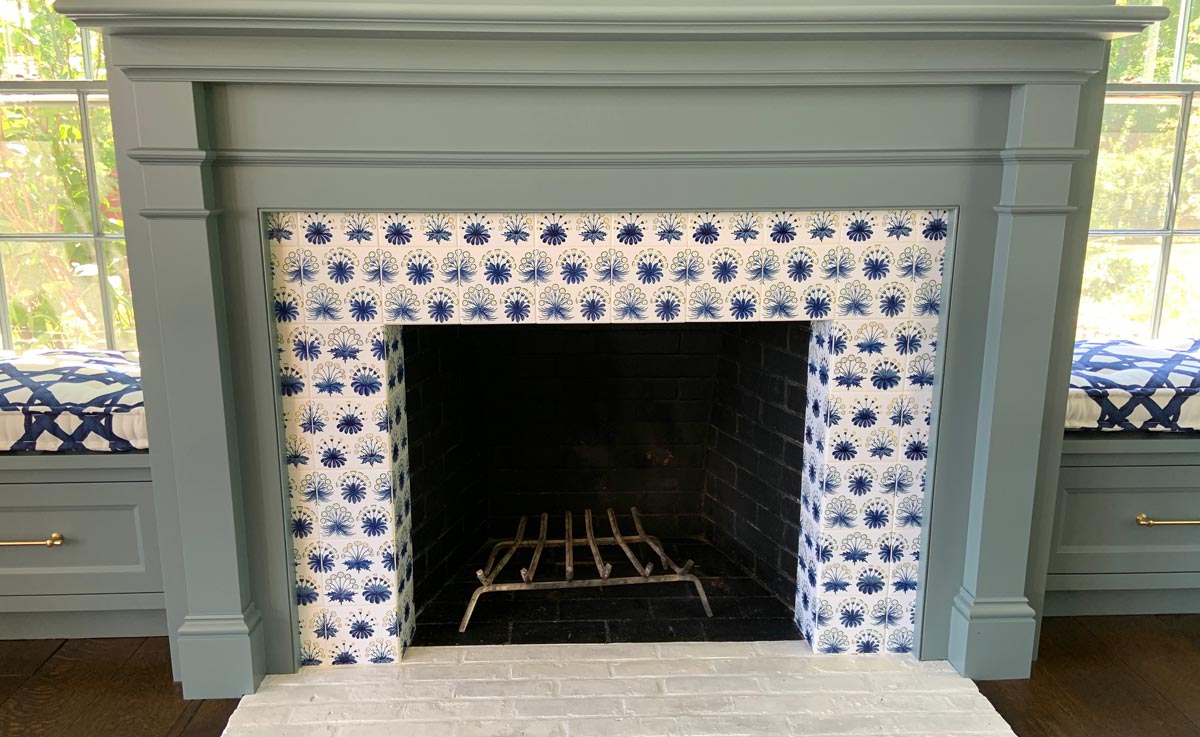
William Morris Early Tiles: The Evolution of Daisies
William Morris De Morgan Arts & Crafts Victorian Blue & White Pre-Raphaelite Medieval

William Morris De Morgan Arts & Crafts Victorian Blue & White Pre-Raphaelite Medieval
Main Red House and Early Tiles Catalog Textile Designs Site Map Search FAQ
Janey's Blue Serge Daisies Woodblock Daisy Blue & White Daisies Membland

...everything made by man's hands has a form, which must be either beautiful or ugly; beautiful if it is in accord with Nature, and helps her; ugly if it is discordant with Nature, and thwarts her; it cannot be indifferent. ~William Morris
The image shown illustrates the evolution of daisies. Here they are by row:
Bottom Row: The bottom row of tiles is representative of the Morris, Marshall and Faulkner tiles of the 1860s.
Middle Row: The middle row, with the heavy fronding, seems to me to show Kate Faulkner's hand.
Top Row: The top row is a Morris & Co. tile from the 1880s, after Morris & Co. were no longer producing tiles in-house. It was probably executed in De Morgan's tileworks. This pattern was sold by Morris & Co. into the 20th century.
You can mix and match tiles in the daisy backsplash -- just keep consistent on each row.
The first daisy tiles sold by 'The Firm' were hand painted in blue and yellow on tin-glazed Dutch banks. This gave them an opaque white appearance. After being painted, the tiles were fired again at a lower temperature which resulting in the glaze barely softening so the color sat on top of the background without being fused into it. (Read why this was a problem). This is most evident in the 1860s tiles (bottom row).
This pattern was later produced in blue and white.
This backsplash is built on Morris daisies spanning more than three decades. Top row: 1882 Morris & Co Daisies (sold from the 1880s well into the 1920s); second row, 1870s fronded daisy sold by Morris, Marshall, and Faulkner: top row: early 1860s Morris daisy tile, also sold through Morris, Marshall, and Faulkner.
Bottom Row: The bottom row of tiles is representative of the Morris, Marshall and Faulkner tiles of the 1860s.
Middle Row: The middle row, with the heavy fronding, seems to me to show Kate Faulkner's hand.
Top Row: The top row is a Morris & Co. tile from the 1880s, after Morris & Co. were no longer producing tiles in-house. It was probably executed in De Morgan's tileworks. This pattern was sold by Morris & Co. into the 20th century.
For borders, the tiles are seamless on the horizontal, but layering them in a backsplash gives an interest effect. And it has a nice backstory, both as to their being inspired by Jane Morris's original Red House daisies and because the evolution of the Morris-De Morgan tilemaking process is so evident.

Daisies were produced both in blue and white and in blue, white with yellow center, and green with yellow centers.
The Morris & Co. daisies are available as shown in blue and white with yellow centers, and blue and white with lighter blue centers.
Daisies are available in 4.25 and 6 inch tiles. You can customize the Evolution of Daisies backsplash to fit any size area. For example, 25 4.25 inch tiles will cover a 34 x 13 inch under cabinet backsplash.
4.25 inch square tiles: $53 each
6 inch square tiles: $63 each



